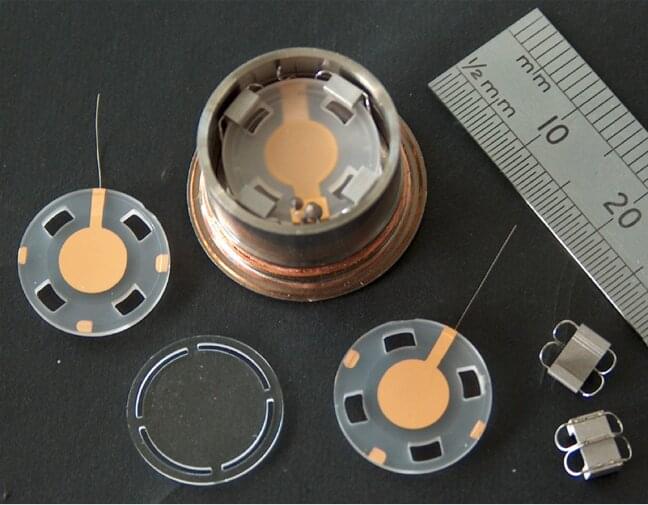Yes, the magnetosphere is weakening. It does that from time to time.
Neuroscientists are the cartographers of the brain’s diverse domains and territories — the features and activities that define them, the roads and highways that connect them, and the boundaries that delineate them. Toward the front of the brain, just behind the forehead, is the prefrontal cortex, celebrated as the seat of judgment. Behind it lies the motor cortex, responsible for planning and coordinating movement. To the sides: the temporal lobes, crucial for memory and the processing of emotion. Above them, the somatosensory cortex; behind them, the visual cortex.
Not only do researchers often depict the brain and its functions much as mapmakers might draw nations on continents, but they do so “the way old-fashioned mapmakers” did, according to Lisa Feldman Barrett, a psychologist at Northeastern University. “They parse the brain in terms of what they’re interested in psychologically or mentally or behaviorally,” and then they assign the functions to different networks of neurons “as if they’re Lego blocks, as if there are firm boundaries there.”
But a brain map with neat borders is not just oversimplified — it’s misleading. “Scientists for over 100 years have searched fruitlessly for brain boundaries between thinking, feeling, deciding, remembering, moving and other everyday experiences,” Barrett said. A host of recent neurological studies further confirm that these mental categories “are poor guides for understanding how brains are structured or how they work.”
IBM Z mainframe gets AI acceleration.
IBM decided to join the AI accelerator party and the company has embedded its custom solution into the next generation of IBM Z mainframe chips.
Technology Breakthroughs Enable Training of 120 Trillion Parameters on Single CS-2, Clusters of up to 163 Million Cores with Near Linear Scaling, Push Button Cluster Configuration, Unprecedented Sparsity Acceleration.
For more information, please visit http://cerebras.net/product/.
About Cerebras Systems.
Cerebras Systems is a team of pioneering computer architects, computer scientists, deep learning researchers, and engineers of all types. We have come together to build a new class of computer to accelerate artificial intelligence work by three orders of magnitude beyond the current state of the art. The CS-2 is the fastest AI computer in existence. It contains a collection of industry firsts, including the Cerebras Wafer Scale Engine (WSE-2). The WSE-2 is the largest chip ever built. It contains 2.6 trillion transistors and covers more than 46,225 square millimeters of silicon. The largest graphics processor on the market has 54 billion transistors and covers 815 square millimeters. In artificial intelligence work, large chips process information more quickly producing answers in less time. As a result, neural networks that in the past took months to train, can now train in minutes on the Cerebras CS-2 powered by the WSE-2.
This situation has become a logistical headache for SpaceX, which seeks road closures to move rocket hardware along the road and for tests and launches. It has also been unpleasant for nearby residents and those who enjoy the undeveloped beach.
Now, SpaceX founder Elon Musk has a potential solution. The Brownsville Herald reports that officials from Musk’s The Boring Company met with Cameron County officials in July to discuss digging a tunnel from the south end of South Padre Island to the north end of Boca Chica Beach, facilitating alternate access to the barrier island.
Rocket Lab is one step closer to going to Mars with NASA’s approval of the company’s Photon spacecraft for an upcoming science mission. If all continues according to plan the two craft will launch in2024and arrive on the red planet 11 months later to study its magnetosphere.
The mission is known as the Escape and Plasma Acceleration and Dynamics Explorers, or ESCAPADE (hats off to whoever worked that one out), and was proposed for a small satellite science program back in 2,019 eventually being chosen as a finalist. UC Berkeley researchers are the main force behind the science part. (You can read much more about the project here.)
These satellites have to be less than 180 kilograms (about 400 pounds) and must perform standalone science missions, part of a new program aiming at more lightweight, shorter lead missions that can be performed with strong commercial industry collaboration. A few concepts have been baking since the original announcement of the program, and ESCAPADE just passed Key Decision Point C, meaning it’s ready to go from concept to reality.
A ground-breaking detector that aims to use quartz to capture high frequency gravitational waves has been built by researchers at the ARC Centre of Excellence for Dark Matter Particle Physics (CDM) and the University of Western Australia.
In its first 153 days of operation, two events were detected that could, in principle, be high frequency gravitational waves, which have not been recorded by scientists before.
Such high frequency gravitational waves may have been created by a primordial black hole or a cloud of dark matter particles.
The James Webb Space Telescope is scheduled for launch on October 31. It will help scientists hunt for alien life on exoplanets and look to the beginning of time.
In 2,024 NASA is scheduled to return humans to the surface of the Moon with the Artemis III mission. One year before that, Artemis II should circle the satellite without touching down. Both missions are to be crewed by experienced astronauts. But not the dearMoon mission, which will carry civilians to the Moon and back on SpaceX hardware.








